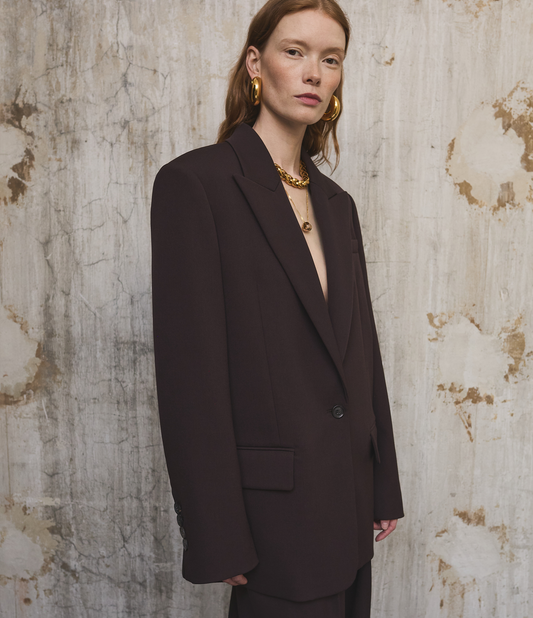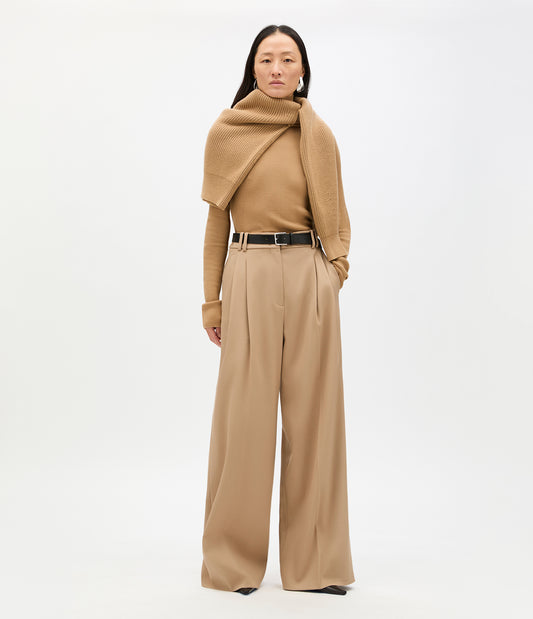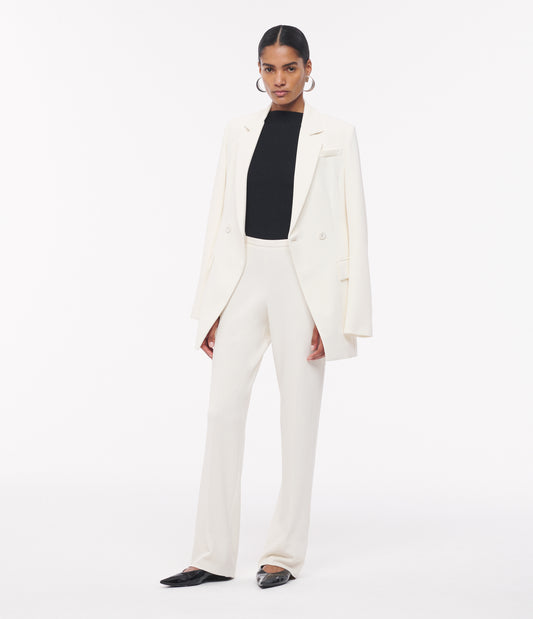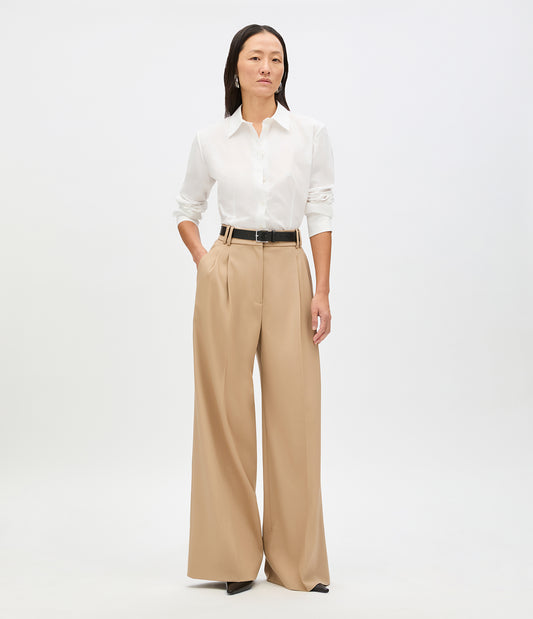We designed our packaging for as little impact as possible on the principles of sustainable sourcing, circularity, and absolute minimization of waste, all without compromising on our design standards.
We carefully researched the materials of our packaging over the course of many months. The results have ranged from adopting zero waste, compostable stickers to organic cotton, fair trade garment bags that last a lifetime. We sought to determine which options would best balance four goals; one, adequately protecting the garments; two, reducing waste within our supply chain and upon receipt by our customers; three, using the most sustainable materials we could find; and four, zero compromise on our design standards.
While we are confident in the decisions we made when choosing our packaging, we know this is an area ripe for innovation and improvement and continue to look for solutions that will better meet our needs and goals.
Why We Choose Our Packaging
Our Boxes
- Our boxes are made from 60% recycled corrugated board mixed with 40% virgin material and made in the USA.
- In developing our boxes with our vendor, it was clear that we needed a mix of recycled and virgin materials to achieve package stability and ensure our product arrived safe and secure at its destination. Using recycled materials reduces water consumption during the manufacturing process by as much as 40%. Our boxes are fully recyclable.
Our T-Shirt Mailer
- Our mailers or envelopes are made in the USA from 100% Recycled Paper (90% post-consumer content, 10% pre-consumer content).
- Our mailers are an easy envelope for small orders, reducing our logistics footprint and are fully recyclable.
Our Stickers
- Stickers used to close our envelopes are made from 100% post-consumer waste and compostable.
Our Polybags
- Used for garment protection during transport from Italy and Portugal to the US, these bags are made in Italy, close to our manufacturing partners.
- We do not use plastic derived from petroleum in our supply chain. However, during transport, we do need a solution to protect our product. Our solution is to use a type of polyethylene produced from sugarcane. This was a compromise.
- We initially sought a fully home-compostable polybag solution that would allow the customer to dispose of it responsibly if necessary. Unfortunately, home-compostable solutions are challenging to find (industrially compostable is more common) and are not shelf-stable for more than 6mo to a year, which makes it difficult for small brands to purchase and stock given high minimum order quantities - in other words, if we bought 25,000 units, a common minimum order quantity, and couldn’t use them over the course of a year, they would become unusable and go to waste.
- We continue to search for new initiatives and materials in this space.
Our Lunch Bags
- Our “lunch bag” is made from 70% elementary chlorine free, wood-free pulp & 30% post consumer waste paper.
- We sought an alternative to plastic polybags when shipping product to consumers. This high quality paper option protects garments during transport and is beautifully made for consumer reuse.
Our Hangers
- Our hangers are made from 100% cellulose fiber from recycled pulp.
- Many hangers used for shipping are made from plastic.
- We chose this hanger, made from recycled materials, to keep our packaging plastic free.
Our Garment Bags
- Our garment bag is made in India from 100% Organic Fair Trade Cotton in a 10 oz weight.
- When designing our garment bag, we knew we wanted a high quality option that would last years for our customers.
- This is a beautifully made garment bag produced by our B Corp certified partner in India.
As a whole, we were faced with constraints in our decision-making. As a small brand, we could not meet the large minimum order quantities of some vendors whose product we wanted to consider. For some other vendors, we weren’t able to obtain answers to some of the tough questions we asked around provenance or the science behind their compostable or biodegradable product. We look forward to innovating with current and new vendors as better solutions evolve.



















